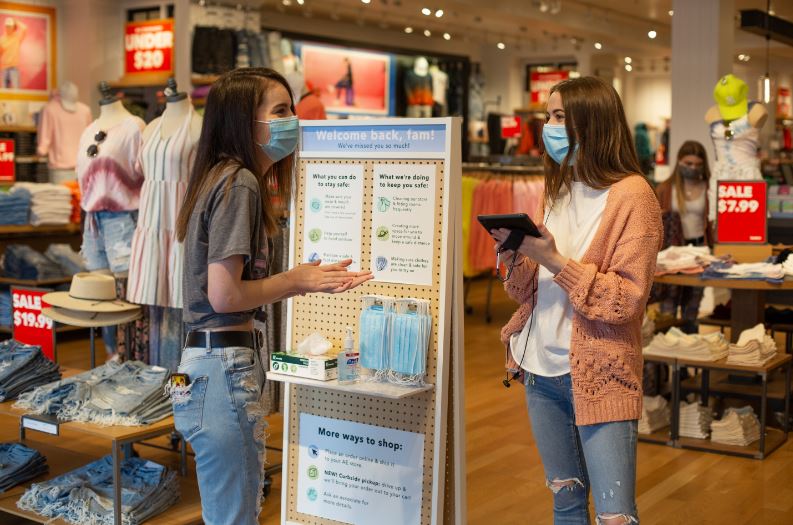And it’s starting to look like it paid off
By Madeline Stone | Link to article
- Curbside pickup has ramped up during the coronavirus pandemic. A 2019 analysis estimated that curbside pickup could be a $35 billion market by the end of 2020.
- Retailers who reported earnings this week said their rollout of curbside services helped sales while stores were closed.
- Curbside helps retailers move through inventory and cut costs while promoting customers’ safety.
- Visit Business Insider’s homepage for more stories.
As “nonessential” retailers temporarily closed their doors to help stop the spread of the novel coronavirus, many pivoted so that sales wouldn’t have to stop completely.
For many retailers both large and small, that meant leaning into curbside pickup.
Best Buy adapted its stores to a curbside-pickup-only model on March 22. CEO Corie Barry said in the retailer’s earnings call on Thursday that its US online sales were up 300% during the six-week period that Best Buy was operating curbside only. She added that almost 50% of those sales were attributed to curbside pickups.
Walmart, Target, Kroger, and Whole Foods have dedicated resources to scaling their curbside pickup services in recent years.
And, other retailers were already starting to roll out these services before the pandemic prompted them to launch them more quickly.
A March 2019 analysis by Cowen & Co. estimated that curbside pickup could be a $35 billion market by the end of 2020. It predicted that 25% of shoppers will have tried curbside before the end of 2020 — and this was before the novel coronavirus arrived.
It’s likely curbside services have been popular with shoppers in the pandemic era because they can provide a relative sense of safety and convenience. Shoppers don’t have to interact with others in stores, wait in lines to check out, or search aisles for the items they need.
But, as Neil Saunders, managing director of GlobalData Retail, pointed out in emailed comments, curbside pickup provides retailers with a number of other advantages.
“It kept many associates employed, prevented a pile-up of inventory in stores, and was a far cheaper option than delivering from central warehouses,” Saunders said, referring to Best Buy’s curbside strategy.
American Eagle Outfitters began to offfer curbside pickup as its stores were permitted to reopen in phases in May.
“Curbside pick-up is definitely more cost effective from a logistical standpoint. It does require additional care and attention from our in-store sales associates to execute,” AEO’s chief commercial officer Andrew McLean told Business Insider. “However we are committed to adapting to the needs of our customers and pride ourselves in providing an exceptional shopping experience no matter how our AE and Aerie customers choose to shop.”
Many states have allowed retailers to operate curbside pickup in the first phases of their reopening strategies, so sticking to this model also keeps stores in line with that guidance.
Stores are still a major asset
Kohl’s was already testing curbside at a couple of stores before the pandemic hit. In the retailer’s earnings call on Tuesday, Kohl’s CEO Michelle Gass said it had rolled out the service to more locations in April, adding that it had seen “great customer uptake” so far.
The retailer said it also used its stores to fulfill a higher percentage of digital orders in the quarter.
“More than 40% of digital orders were fulfilled by ship-from-store and customer pickup during the first quarter, and this percentage was much higher in April, following the successful launch of store drive-up,” Gass said during the call.
The results also show how much of an asset retailers’ stores can be, even when they’re closed.
Many retailers, including TJ Maxx and its sister store Marshalls, that have had to close locations amid the pandemic are now resorting to discounting and other solutions to work through inventory that has accumulated in stores. Much of that inventory is now out of date as stores were initially closed in March.
But if retailers can offer pickup and use their stores to fulfill orders, they can potentially avoid the inventory problem while saving on costs.
“Retailers can leverage brick and mortar stores as mini distribution centers, and have no added costs in shipping while closing sales and moving otherwise stagnant inventories,” Wedbush Securities analyst Jen Redding told Business Insider.
Obviously, not all stores are suited to a curbside model. For locations inside malls, it’s tricky.
For stores that can roll out these services, however, it’s a “win-win for consumers and retailers,” Redding said.
